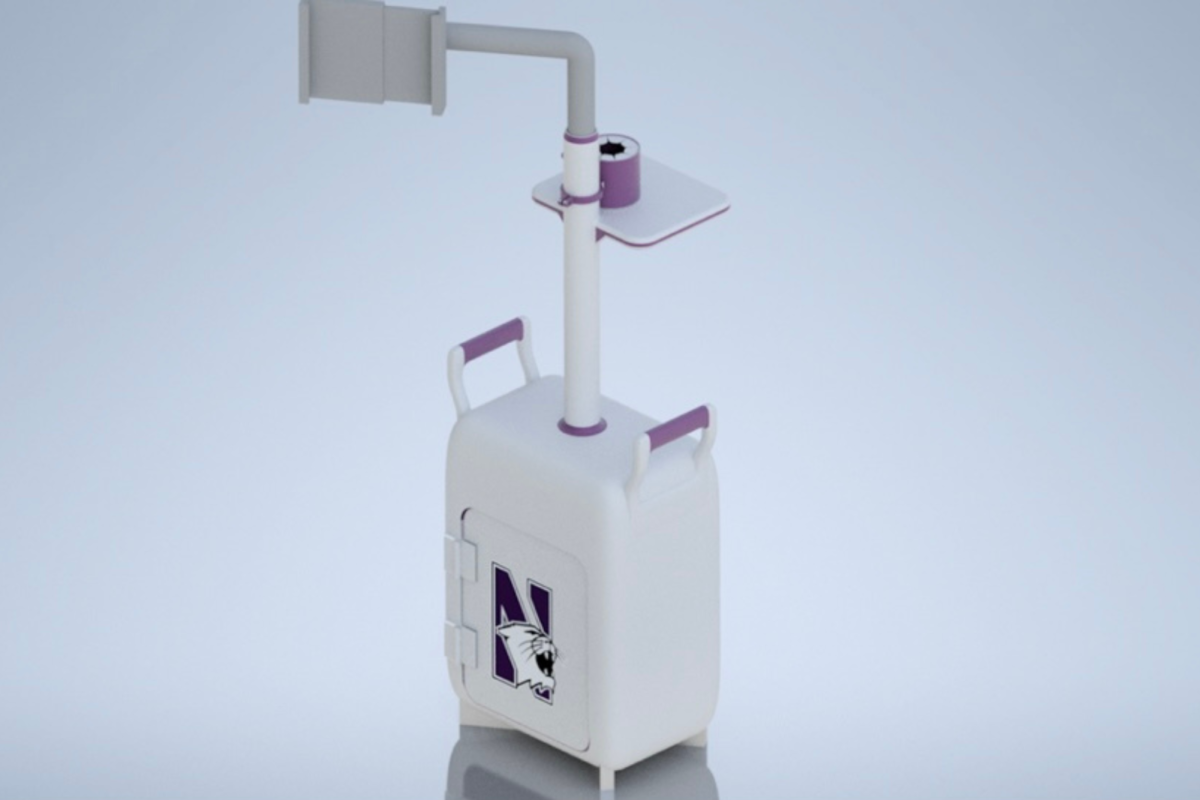Prof. Douglas Osheroff, a 1996 Nobel Prize winner in physics, filled both levels of Ryan Family Auditorium for his talk Monday about his work investigating the 2003 Columbia space shuttle tragedy.
Osheroff, a professor of physics and applied physics at Stanford University, was invited to discuss his time on the Columbia Accident Investigation Board, a 13-member panel convened by NASA to determine the cause of the disaster and to recommend changes for safer space expeditions in the future.
The lecture, hosted by Northwestern Society of Physics Students, focused on a mainstream topic that could appeal both to members of the general public and students not majoring in the physical sciences, said David Caratelli, secretary of the society.
“We usually attract people who are really interested in physics … but this was not a technical talk, as it was about NASA and the Columbia disaster,” the Weinberg sophomore said. “This made it so that people who weren’t only physics majors or interested in physics could attend and enjoy our event.”
Columbia embarked on its final space shuttle mission on Jan. 16, 2003, which was designed as a 16-day research operation. Trained NASA personnel who reviewed the launch footage at first believed Columbia reached its orbit unscathed. It was only during the second review of the launch that NASA engineers noticed a two-kilogram piece of insulating foam come loose from an external fuel tank and graze the shuttle’s left wing. The impact on the video was brief.
“If you blinked, you missed it,” Osheroff. said.
The seven astronauts onboard were reassured the problem was minor before the spacecraft disintegrated upon re-entry into Earth’s atmosphere.
A major question the investigation board needed to answer was whether the small piece of foam was the immediate cause of the incident, Osheroff said. To illustrate the strength of only a small chunk of foam, he compared it to the strength of a bullet.
“The strike velocity of the foam was about 785 feet per second,” Osheroff said. “That’s the velocity of a 22-caliber bullet coming from a rifle barrel.”
After conducting tests, the board concluded the foam had caused enough damage to the shuttle’s protective heat shields to fatally cripple the craft.
Osheroff also discussed the organizational causes of the disaster.
The board’s final report pointed out how debris from external fuel tanks had caused damage to shuttles sent on prior missions but without disastrous consequences. NASA’s management, the report said, had believed the damage from insulating foam was an acceptable risk during liftoff, Osheroff said.
Audience members said Osheroff was able to blend his own research and experiences on the Columbia board with a colorful story about the United States’ space program: the good and the bad.
“I liked how he branched out and spoke about NASA,” said Mark Merkley, a Weinberg freshman. “He also offered his opinions that were pivotal in this investigation. I really never knew anything about (the Columbia disaster), but I definitely have a pretty in-depth idea of it now.”[email protected]






